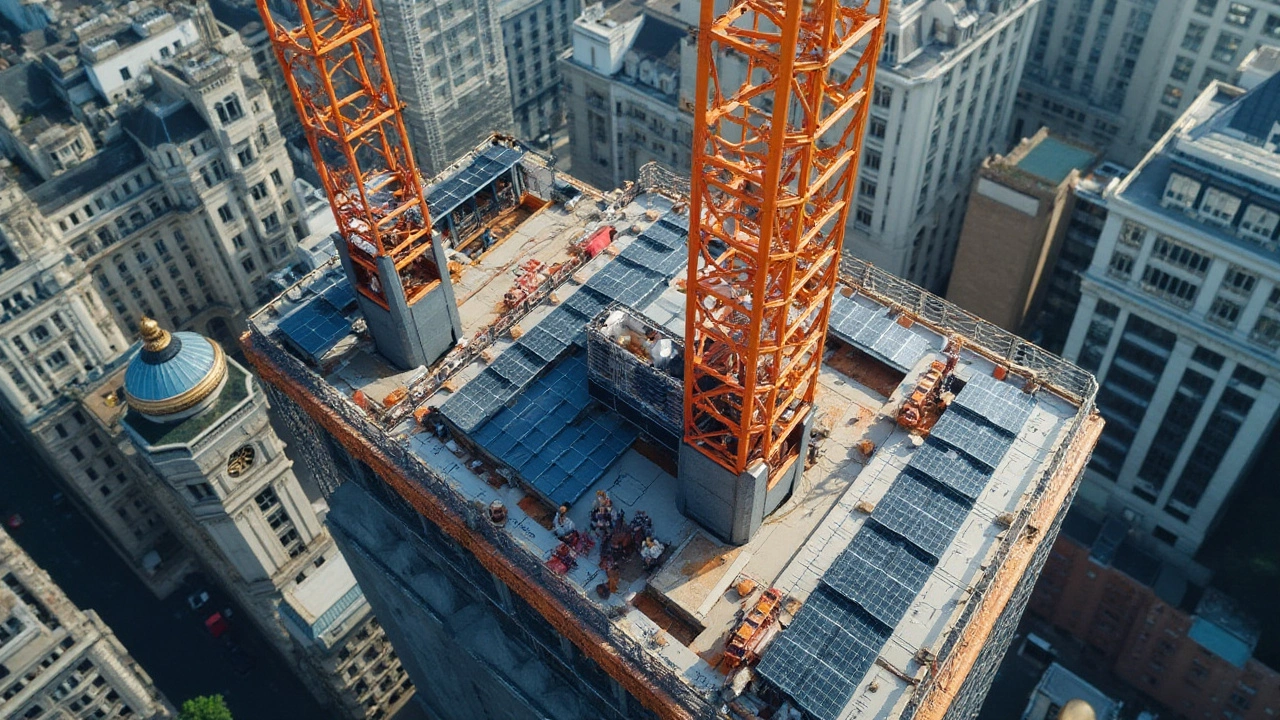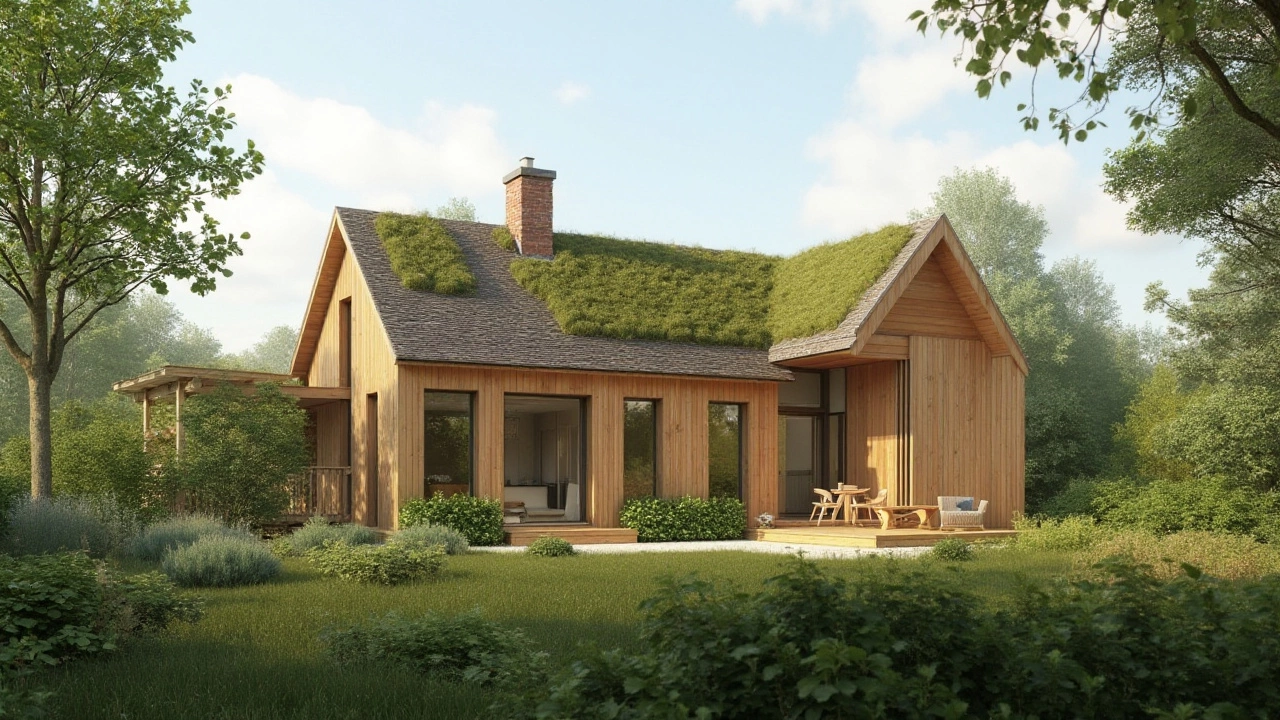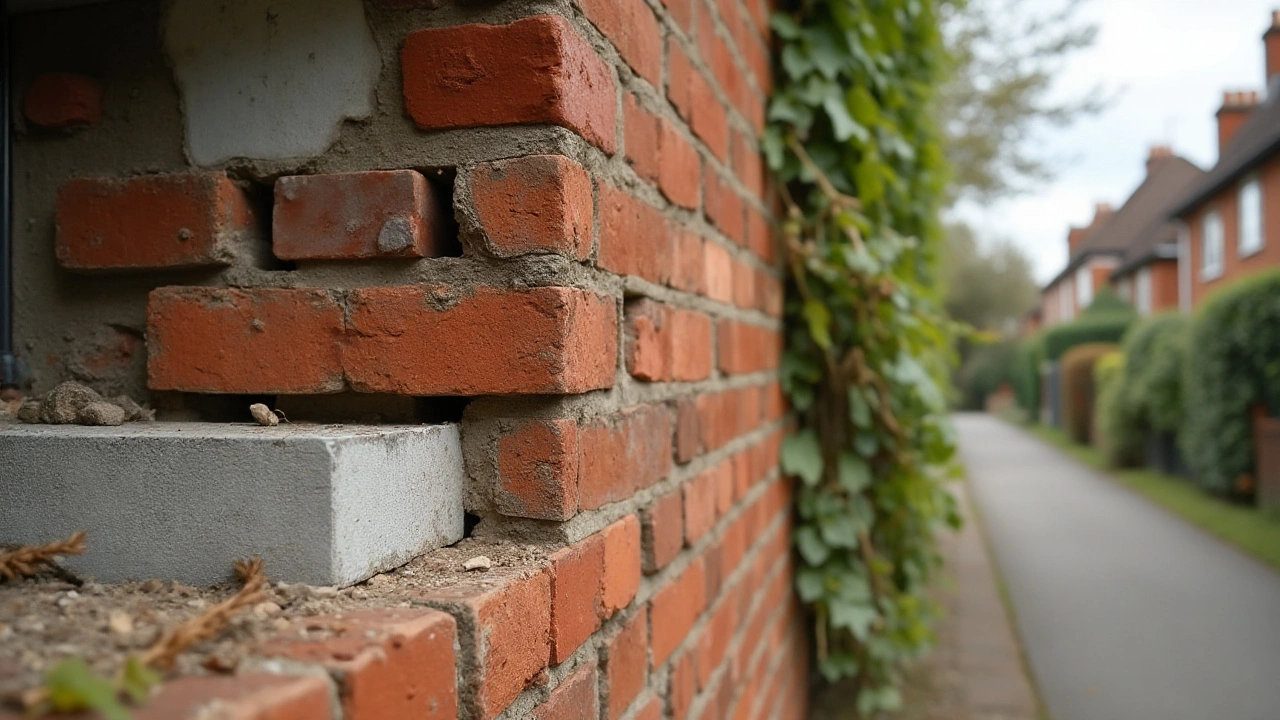Throughout history, construction materials have shaped the landscapes and skylines of our cities. Each type of material brings its own set of characteristics that influence the way structures are designed and built. While traditional materials like stone and timber have stood the test of time, advancements in technology continue to revolutionize the industry with modern innovations.
In our exploration, we will journey through the evolution of construction materials, understanding how their use has progressed over time. This knowledge is essential for anyone looking to make informed decisions about materials, whether for building a skyscraper or simply renovating a home.
The story of construction materials is one deeply intertwined with sustainability and the push towards reducing the environmental impact of our built environment. Discover how modern approaches are crafting the path toward a more sustainable future, offering exciting opportunities for the industry.
- History and Evolution of Construction Materials
- Types of Traditional Construction Materials
- Emerging and Innovative Materials in Construction
- Choosing the Right Material for Your Project
- Sustainability and Future Trends in Construction Materials
History and Evolution of Construction Materials
The journey of construction materials dates back thousands of years, tracing the rise and fall of civilizations and their architectural marvels. Ancient builders relied heavily on what was available in their immediate environments. From the formidable pyramids of Egypt, built with limestone and granite, to the earthen walls of Mesopotamia, early societies utilized locally available resources in ingenious ways. Through meticulous innovation, they created durable structures that continue to inspire awe. While these ancient builders did not possess our modern technology, their profound understanding of materials laid the groundwork for contemporary building practices. Fast-forward to the Roman Empire, a civilization heralded for its groundbreaking use of concrete, which still shapes our urban landscapes today. Their mastery of mixing volcanic ash with lime to create ‘opus caementicium’ paved the way for mighty structures like the Pantheon, whose majestic dome remains unchallenged in architectural brilliance.
The Medieval Renaissance and Beyond
The progression of construction materials did not halt with the Roman Empire. In the medieval period, Europe saw the rise of grand cathedrals and fortified castles, built primarily with stone and timber. These materials, both robust and malleable, allowed for elegant expressions of religious and feudal power. The Renaissance later introduced a revival in classical architectural principles, spearheading advancements in the types and aesthetics of construction materials. The development of steel in the 19th century marked a transformative epoch in the construction industry, revolutionizing both skylines and engineering feats. This era gave birth to the skyscraper, a symbol of modernity powered by the strength and versatility of steel. Structures could now reach unprecedented heights, ushering in a new age of urban expansion and industrialization.
Modern Day Innovations
Today, the landscape of construction materials continually evolves, spurred by the quest for more durable, cost-effective, and sustainable solutions. The 20th and 21st centuries introduced novel materials like composites and reinforced plastics. These innovations not only enhance structural integrity but also address global environmental challenges. Sustainable construction, a hot topic in the industry, pushes for materials that minimize ecological impact, such as recycled steel and bamboo.
"The best material is no longer just about strength or aesthetics but also its footprint on our planet," according to Green Building Council spokesperson.The evolution of building materials is as much about the past as it is about anticipating future challenges and pioneering new paths in construction technology. New techniques, like 3D printing in construction, promise to further push the boundaries, offering custom solutions with reduced waste and greater efficiency.
Types of Traditional Construction Materials
Traditional construction materials are often revered for their durability and time-tested reliability. They form the foundational backbone of many structures, embodying centuries of architectural evolution. Among these materials, stone has perhaps the longest legacy. Its natural abundance and tensile strength have made it a preferred choice since the earliest construction days. From the pyramids of Egypt to the ancient temples of Greece, stone has provided an almost mythical permanence. Its use in modern constructions, though reduced, still finds niches in luxury properties and emblematic structures due to its aesthetic appeal and robustness.
Another stalwart of traditional construction materials is wood. Its versatility is unmatched—ranging from timber-framed cottages to towering older cathedrals. Wood's intrinsic warmth and workability made it an undeniable favorite for centuries, allowing builders to realize ambitious designs with relative ease. Even today, wood continues to offer unmatched aesthetic value and sustainability, particularly in countries with abundant forests. However, the balance of managing forest resources sustainably remains crucial, which prompts ongoing discussions in modern construction contexts.
Clay bricks have also played a significant role, with their use dating back to the early years of human civilization. Their high thermal mass and durability once pegged them as the material of choice for building homes and infrastructure. The Middle East's ancient ziggurats and Rome's visually arresting architecture owe much of their grandeur to clay bricks. As a construction material, bricks provide an excellent balance of cost and performance but are labor-intensive and relatively less flexible compared to newer materials. In terms of environmental impact, they offer significant benefits in energy efficiency once in situ, retaining heat in cooler climates and vice versa.
On the metallic front, steel and iron have revolutionized construction beyond simple structural support. The industrial age harnessed their strength for frameworks supporting monumental structures like bridges and skyscrapers. Remarkably, iron’s variations, like wrought and cast iron, brought architectural diversity and strength in differing contexts. Steel, with its unparalleled strength-to-weight ratio, ushered in an era of construction where dreaming sky-high was more feasible and practical. Steel's benefits are numerous: it's fire-resistant, tough, and can boast impressive longevity when properly treated and maintained.
"Concrete could be described as the Achilles' heel of modern construction not because it is weak, but precisely due to its omnipresence," noted a report from the International Association for Bridge and Structural Engineering.
Finally, there's concrete, a blend of water, aggregate, and cement, effectively shaping the built environment of the modern world. Despite being ancient in its usage, its adaptability has redefined urban landscapes, allowing for incredibly diverse architectural forms and functions. Its strengths lie in the multitude of possibilities it offers as a construction material: it’s both malleable when wet and immensely strong once set. The ability to combine it with steel for reinforced purposes further underscores its significance in both traditional and modern contexts.
| Material | Usage Era | Significant Structure |
|---|---|---|
| Stone | Ancient | Pyramids of Giza |
| Wood | Medieval | Traditional Timber Cottages |
| Bricks | Roman | Colosseum |
| Steel | Modern | Eiffel Tower |
| Concrete | Contemporary | Burj Khalifa |
These traditional materials are integral to human history, each having its chapter in the story of how we construct our living environments. Understanding their use helps inform not only our current choices but also future innovations, marrying the past with the present to build a sustainable future in construction.

Emerging and Innovative Materials in Construction
The world of construction materials is constantly evolving, bringing forth a myriad of new options that challenge traditional norms. As the sector strives to meet the demands of modern architecture and environmental concerns, a host of innovative materials have entered the spotlight. These emerging materials seek to enhance performance, sustainability, and aesthetic appeal in ways previously unimaginable. From cutting-edge composites to biogenic substances, the array of options available today reshapes how we think about building.
One remarkable new material gaining traction is cross-laminated timber (CLT). Derived from stacking layers of wood crosswise, CLT offers unparalleled strength, making it a viable alternative to concrete and steel in high-rise construction. Not only does it present a sustainable option—wood being a renewable resource—but its aesthetic warmth appeals to architects and designers alike. CLT also boasts carbon-sequestering properties, which helps mitigate the environmental impact of construction projects. Buildings such as the 18-story Mjøstårnet in Norway, currently the world's tallest timber building, stand testament to the potential of this sustainable construction material. "Wood is the building material of the 21st century," heralds Achim Menges, a German architect and professor, in a
plea for embracing timber as the architecture of the future.
Within the realm of concrete, advancements such as self-healing concrete have revolutionized how we approach structural integrity. By integrating microcapsules filled with bacteria into the concrete mix, this ingeniously engineered material can seal its own cracks automatically. Upon contact with water, these bacteria produce limestone, effectively repairing damage and extending the longevity of the construction. Self-healing concrete is a boon for infrastructure, reducing maintenance costs and increasing the lifespan of vital structures like bridges and tunnels. This innovation is not only practical but visionary, showcasing how technology intertwines with nature to elevate construction materials.
Furthermore, the rise of aerogels marks a significant breakthrough in insulation material. Known for its incredibly low density and exceptional thermal properties, aerogel is touted as one of the world's best insulators. This blue-tinged material, albeit lightweight, traps air effectively, minimizing heat loss and gaining favor for energy-efficient buildings. Aerogels also find utility in highly specialized applications, such as insulating spacecraft. Despite its current high production cost, future advancements may render it a household name for home improvement.
One cannot disregard the impact of recycled and bio-based materials, leading a shift towards sustainable construction. Recycling glass, plastics, and rubber into material alternatives provides an innovative way to repurpose waste, reducing landfill dependency. Concurrently, bio-based materials derived from plants or agricultural byproducts, like hempcrete and mushroom mycelium, offer truly green solutions. Hempcrete, made from hemp hurds and lime, brings natural insulation and breathability to structures, while being carbon-negative. These developments are gaining traction, especially in regions advocating eco-friendly practices. With legislation increasingly backing sustainable initiatives, the potential for these building materials shines ever brighter.
A glimpse into the future suggests exciting possibilities, such as transparent aluminum and graphene-enhanced composites. Transparent aluminum, or ALON, exhibits the strength of metal while maintaining clarity akin to glass, promising revolutionary applications in both construction and design. Meanwhile, graphene—a single layer of carbon atoms—adds incredible strength and conductivity to materials, positioning itself as a game-changer in sectors requiring ultra-light and durable components. The quest for innovation continues unabated, paving the way for advancements that blend functionality with sustainability, elegance with efficiency.
Choosing the Right Material for Your Project
When embarking on any construction project, the selection of construction materials is crucial to ensuring durability, aesthetics, and functionality. The abundance of choices can be overwhelming, with traditional options like concrete and steel competing against modern innovations such as engineered wood and composites. Each material brings its own characteristics, from strength and weight to environmental impact and cost. Considering these factors early on can save time and resources in the long run, as they play a pivotal role in the project's success. It's essential to assess the specific needs of your project, including structural requirements, budget constraints, and local climate conditions, which can all influence material suitability.
Cost is often the primary factor in material selection, but it shouldn't be the sole consideration. While traditional materials may offer a lower upfront cost, their long-term maintenance and environmental costs can add up over time. Innovative sustainable construction materials, although sometimes more expensive initially, can reduce a building's carbon footprint and offer savings in energy efficiency. This introduces an interesting dilemma for those planning projects – a balance must be struck between initial investment and long-term gains. Understanding the life cycle of materials can provide insights into their true costs and benefits, ultimately guiding more informed decisions that align with both financial and environmental goals.
"The right material choice not only enhances the structure's performance but also its impact on our planet," says Jane Smith, a renowned architect and advocate for sustainable building practices.
Another critical factor to consider is the local environment. A material's resilience can greatly depend on climatic conditions. For example, wood might not be ideal in areas with high humidity, while steel constructions may struggle under constant exposure to sea air, leading to corrosion. It's vital to consult with local experts and review case studies of existing buildings in the area to see which materials have stood the test of time. This knowledge can prevent unforeseen challenges down the road and ensure your project not only survives but thrives in its surroundings.
Let's take a closer look at how different materials compare in terms of sustainability – a significant consideration in modern construction. A study conducted by a leading environmental agency produced revealing results in the form of a detailed examination, uncovering that buildings constructed with recycled materials consume up to 45% less energy over their lifespan. This kind of data underscores the importance of looking beyond the immediate horizon and considering the broader ecological footprint of your project. With an increasing global focus on environmental responsibility, making informed material choices can position your project at the forefront of sustainable innovation.
Finally, consulting with professionals, such as architects and engineers, can provide invaluable guidance. Their understanding of material properties and knowledge of current trends can significantly influence decisions, helping you navigate this complex process. Whether you're constructing a residential home or a commercial edifice, partnering with knowledgeable experts ensures that your choice of building materials will deliver in performance and sustainability, meeting your project's unique demands and carving out a framework for its success.

Sustainability and Future Trends in Construction Materials
The construction industry is at a fascinating crossroads, as innovations in construction materials are increasingly being driven by the urgent need for sustainability. Traditional methods are no longer sufficient to tackle the environmental challenges facing the world today. The future of building materials lies in a delicate balance between performance, aesthetics, cost-efficiency, and environmental impact. Historical reliance on materials such as concrete and steel has led to significant carbon footprints, prompting a decisive shift towards more eco-friendly alternatives, such as bamboo, recycled materials, and innovative composites, which reduce waste and energy consumption.
Advancements in technology have played a crucial role in this shift by offering new ways to produce and utilize materials. For instance, the advent of 3D printing technology has made it possible to use advanced composites in ways previously unimagined, leading to more efficient use of materials with minimal waste. Additionally, there's a push to incorporate bio-based materials like hempcrete, which sequester carbon and have thermal properties that reduce the need for extensive heating and cooling systems. It's this innovative use of materials that not only addresses environmental concerns but also offers economical solutions in the long run.
Perhaps one of the most promising trends is the development of smart materials. These are specially designed to adapt to their environment, providing real-time feedback and adjustments to improve energy efficiency and performance. Imagine a building façade that changes its thermal properties based on the weather, or windows that adjust their opacity in response to sunlight. Smart materials are quickly transforming from conceptual to practical applications, offering a glimpse into a future where buildings are not just constructed, but are dynamic entities.
Another critical aspect of future trends in home improvement is the use of recycled and upcycled materials. Salvaging materials like metals and plastics that would otherwise end up in landfills not only conserves resources but also offers unique aesthetics and functional opportunities. This trend is steadily being adopted by architects and builders aiming to create zero-waste structures. A study by the World Green Building Council claims that utilizing recycled materials in construction can reduce associated emissions by up to 50%, emphasizing the efficiency of these practices in promoting sustainability.
"The construction industry has within its grasp the potential not only to revolutionize how we build but also to tackle some of our most pressing environmental challenges. Sustainable materials offer a pathway to a greener, more resilient future." – Sarah Cairns, Environmental Consultant
The push towards sustainability in construction is also about changing approaches and fostering collaboration across the industry. Stakeholders are recognizing the importance of integrating sustainable material choices from the design phase, allowing for more comprehensive recycling and waste-reduction strategies. Government policies and economic incentives are rapidly evolving to support these initiatives globally, encouraging both innovation and adoption of sustainable practices in construction.
In conclusion, the future trends in sustainable construction materials point towards a promising and necessary evolution of the industry. By embracing these innovative technologies and materials, we are not only paving the path for more sustainable buildings but also for a healthy, thriving planet. It's a transformative time when the industry must continue to adapt, innovate, and learn how best to integrate these changes into the very fabric of our infrastructures and homes.





